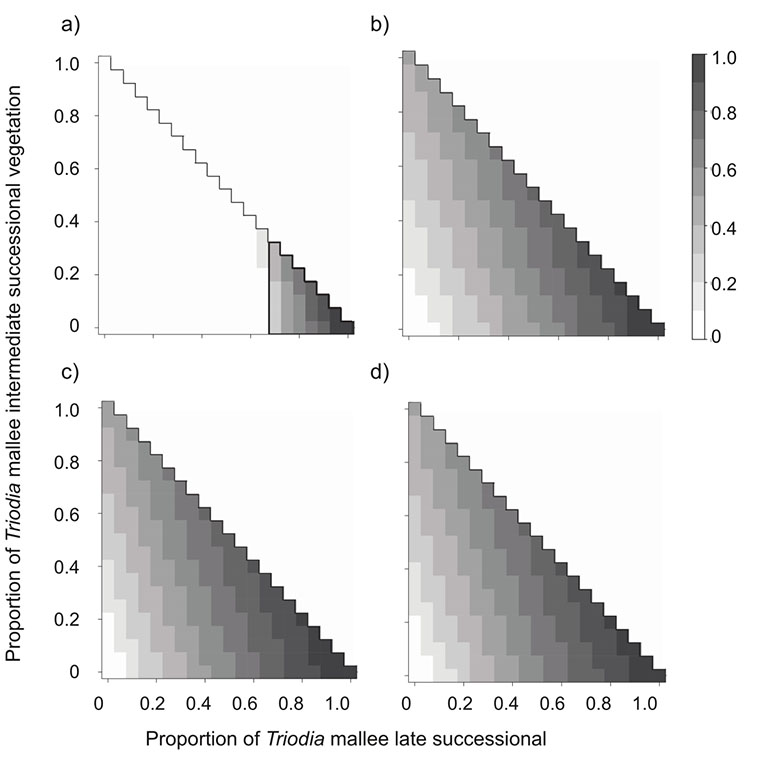
Ecological Archives A025-017-A3
K. M. Giljohann, M. A. McCarthy, L. T. Kelly, and T. J. Regan. 2015. Choice of biodiversity index drives optimal fire management decisions. Ecological Applications 25:264–277. http://dx.doi.org/10.1890/14-0257.1
Appendix C. Optimal strategy and expected value of the reserve for the bird-only analysis.
Fig. C1. Optimal strategy and expected value of the reserve for 10 bird species over a 100-year period. The relative habitat value of each state is represented by the grey scale; with 1 being the optimal value. The objective functions are (a) Binary: constrain to have 100% late; (b) maximize the arithmetic mean probability of species occurrence; (c) maximize the geometric mean probability of species occurrence; (d) minimize the index proportional to extinction risk. The optimal strategy for each state of the reserve is to fight all wildfires, which is denoted by no letter. Taking no action and prescribed burning of either intermediate or late successional vegetation was never optimal in these cases.